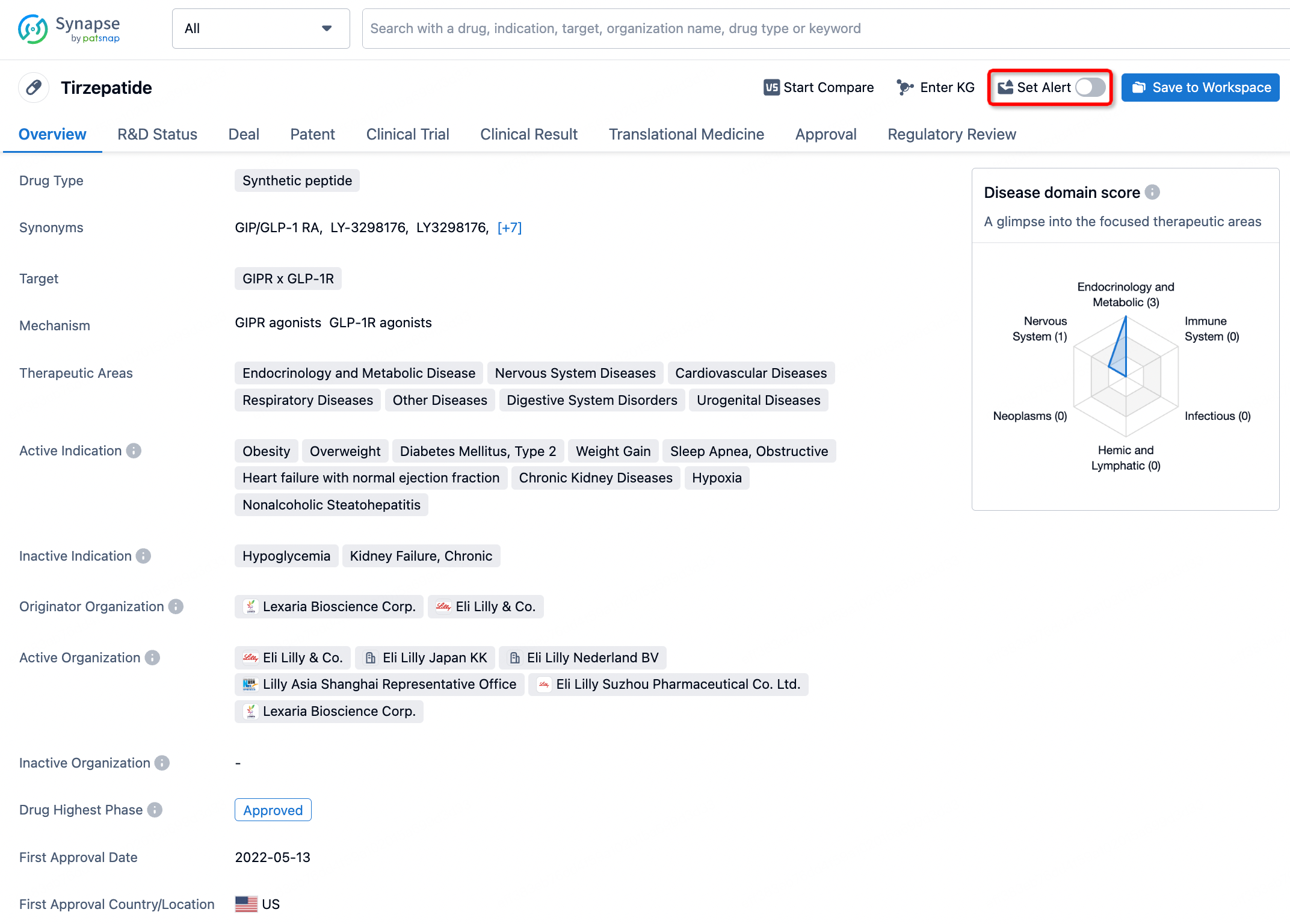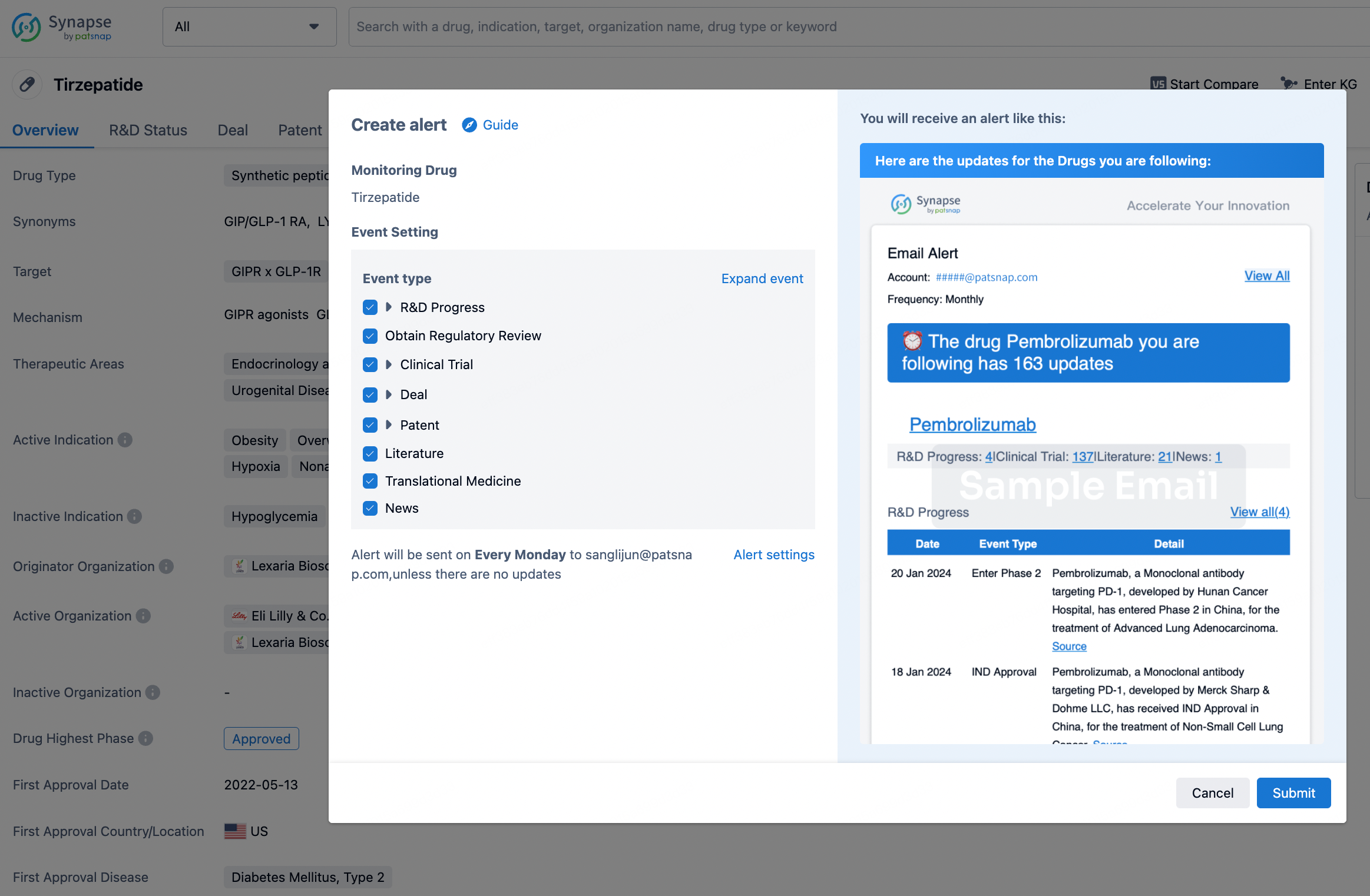Request Demo
What is Salfaprodil used for?
28 June 2024
Salfaprodil is an emerging pharmaceutical compound that has garnered considerable interest in the field of neuroprotection and neurodegenerative diseases. It primarily targets the NMDA (N-methyl-D-aspartate) receptors in the brain, which are implicated in a wide range of neurological conditions. Salfaprodil is being developed and researched by various institutions globally, including notable contributions from academic research centers and pharmaceutical companies. Classified as an NMDA receptor antagonist, Salfaprodil shows promise in protecting neurons from excitotoxicity—a phenomenon where excessive stimulation by neurotransmitters such as glutamate leads to neuronal injury and death.
Research progress on Salfaprodil has been promising yet cautious. Preclinical studies have demonstrated its potential in reducing neuronal damage and improving outcomes in animal models of stroke and traumatic brain injury. Early-phase clinical trials are currently underway to assess its safety, tolerability, and efficacy in humans. Given its potential applications in treating conditions like stroke, traumatic brain injury, and possibly other neurodegenerative diseases such as Alzheimer's and Parkinson's, the scientific community is keenly watching the progress of Salfaprodil.
Salfaprodil operates through a mechanism of action centered on its ability to modulate NMDA receptors. NMDA receptors are a type of glutamate receptor and play a crucial role in synaptic plasticity and memory function. However, when these receptors are overactivated, they can lead to excitotoxicity, a process that contributes to neuronal damage and cell death. By inhibiting these receptors, Salfaprodil helps to prevent the cascade of events that leads to excitotoxicity.
The drug specifically targets the NR2B subunit of the NMDA receptor, which is known to be heavily involved in pathological conditions without significantly affecting the physiological functions of NMDA receptors in normal synaptic transmission. This selective inhibition is advantageous as it reduces the likelihood of side effects commonly associated with non-selective NMDA receptor antagonists, such as cognitive impairment and hallucinations. The fine-tuned action of Salfaprodil on the NMDA receptor allows it to offer neuroprotection while maintaining a better safety profile.
The primary indication of Salfaprodil is in the treatment of acute neurological conditions such as ischemic stroke and traumatic brain injury. These conditions are characterized by sudden and severe neuronal damage, where time is of the essence in preventing long-term deficits. Current treatments for these conditions are limited and often come with significant side effects or limited efficacy. Salfaprodil aims to fill this therapeutic gap by offering a novel approach to neuroprotection.
In ischemic stroke, for example, the rapid restoration of blood flow to affected brain regions is critical, but this process, known as reperfusion, can itself cause additional damage through mechanisms involving excitotoxicity. Here, Salfaprodil's ability to block NMDA receptors can mitigate this reperfusion injury, potentially improving overall outcomes for stroke patients. Clinical trials are currently assessing its efficacy when administered in the acute phase of stroke.
Traumatic brain injury (TBI) is another area where Salfaprodil shows promise. TBI often results in secondary injury processes that exacerbate the initial trauma, leading to prolonged recovery times and persistent neurological deficits. Salfaprodil's neuroprotective properties could help to limit the extent of secondary neuronal damage, thereby improving cognitive and functional recovery in TBI patients.
Beyond these acute conditions, there is also interest in the potential applications of Salfaprodil in chronic neurodegenerative diseases like Alzheimer's and Parkinson's disease. While these diseases have different underlying mechanisms, excitotoxicity is a common pathway that contributes to the progression of neuronal damage. Although research in this area is still in its early stages, the specificity of Salfaprodil's action on NMDA receptors could offer a new avenue for slowing the progression of these debilitating diseases.
In summary, Salfaprodil represents a promising new frontier in neuroprotective therapy. With its targeted mechanism of action and potential applications in both acute and chronic neurological conditions, ongoing research and clinical trials will be crucial to fully understand its benefits and limitations. The next few years will be pivotal in determining whether Salfaprodil can transition from a promising experimental compound to a widely-used clinical treatment.
Research progress on Salfaprodil has been promising yet cautious. Preclinical studies have demonstrated its potential in reducing neuronal damage and improving outcomes in animal models of stroke and traumatic brain injury. Early-phase clinical trials are currently underway to assess its safety, tolerability, and efficacy in humans. Given its potential applications in treating conditions like stroke, traumatic brain injury, and possibly other neurodegenerative diseases such as Alzheimer's and Parkinson's, the scientific community is keenly watching the progress of Salfaprodil.
Salfaprodil operates through a mechanism of action centered on its ability to modulate NMDA receptors. NMDA receptors are a type of glutamate receptor and play a crucial role in synaptic plasticity and memory function. However, when these receptors are overactivated, they can lead to excitotoxicity, a process that contributes to neuronal damage and cell death. By inhibiting these receptors, Salfaprodil helps to prevent the cascade of events that leads to excitotoxicity.
The drug specifically targets the NR2B subunit of the NMDA receptor, which is known to be heavily involved in pathological conditions without significantly affecting the physiological functions of NMDA receptors in normal synaptic transmission. This selective inhibition is advantageous as it reduces the likelihood of side effects commonly associated with non-selective NMDA receptor antagonists, such as cognitive impairment and hallucinations. The fine-tuned action of Salfaprodil on the NMDA receptor allows it to offer neuroprotection while maintaining a better safety profile.
The primary indication of Salfaprodil is in the treatment of acute neurological conditions such as ischemic stroke and traumatic brain injury. These conditions are characterized by sudden and severe neuronal damage, where time is of the essence in preventing long-term deficits. Current treatments for these conditions are limited and often come with significant side effects or limited efficacy. Salfaprodil aims to fill this therapeutic gap by offering a novel approach to neuroprotection.
In ischemic stroke, for example, the rapid restoration of blood flow to affected brain regions is critical, but this process, known as reperfusion, can itself cause additional damage through mechanisms involving excitotoxicity. Here, Salfaprodil's ability to block NMDA receptors can mitigate this reperfusion injury, potentially improving overall outcomes for stroke patients. Clinical trials are currently assessing its efficacy when administered in the acute phase of stroke.
Traumatic brain injury (TBI) is another area where Salfaprodil shows promise. TBI often results in secondary injury processes that exacerbate the initial trauma, leading to prolonged recovery times and persistent neurological deficits. Salfaprodil's neuroprotective properties could help to limit the extent of secondary neuronal damage, thereby improving cognitive and functional recovery in TBI patients.
Beyond these acute conditions, there is also interest in the potential applications of Salfaprodil in chronic neurodegenerative diseases like Alzheimer's and Parkinson's disease. While these diseases have different underlying mechanisms, excitotoxicity is a common pathway that contributes to the progression of neuronal damage. Although research in this area is still in its early stages, the specificity of Salfaprodil's action on NMDA receptors could offer a new avenue for slowing the progression of these debilitating diseases.
In summary, Salfaprodil represents a promising new frontier in neuroprotective therapy. With its targeted mechanism of action and potential applications in both acute and chronic neurological conditions, ongoing research and clinical trials will be crucial to fully understand its benefits and limitations. The next few years will be pivotal in determining whether Salfaprodil can transition from a promising experimental compound to a widely-used clinical treatment.
How to obtain the latest development progress of all drugs?
In the Synapse database, you can stay updated on the latest research and development advances of all drugs. This service is accessible anytime and anywhere, with updates available daily or weekly. Use the "Set Alert" function to stay informed. Click on the image below to embark on a brand new journey of drug discovery!
AI Agents Built for Biopharma Breakthroughs
Accelerate discovery. Empower decisions. Transform outcomes.
Get started for free today!
Accelerate Strategic R&D decision making with Synapse, PatSnap’s AI-powered Connected Innovation Intelligence Platform Built for Life Sciences Professionals.
Start your data trial now!
Synapse data is also accessible to external entities via APIs or data packages. Empower better decisions with the latest in pharmaceutical intelligence.


